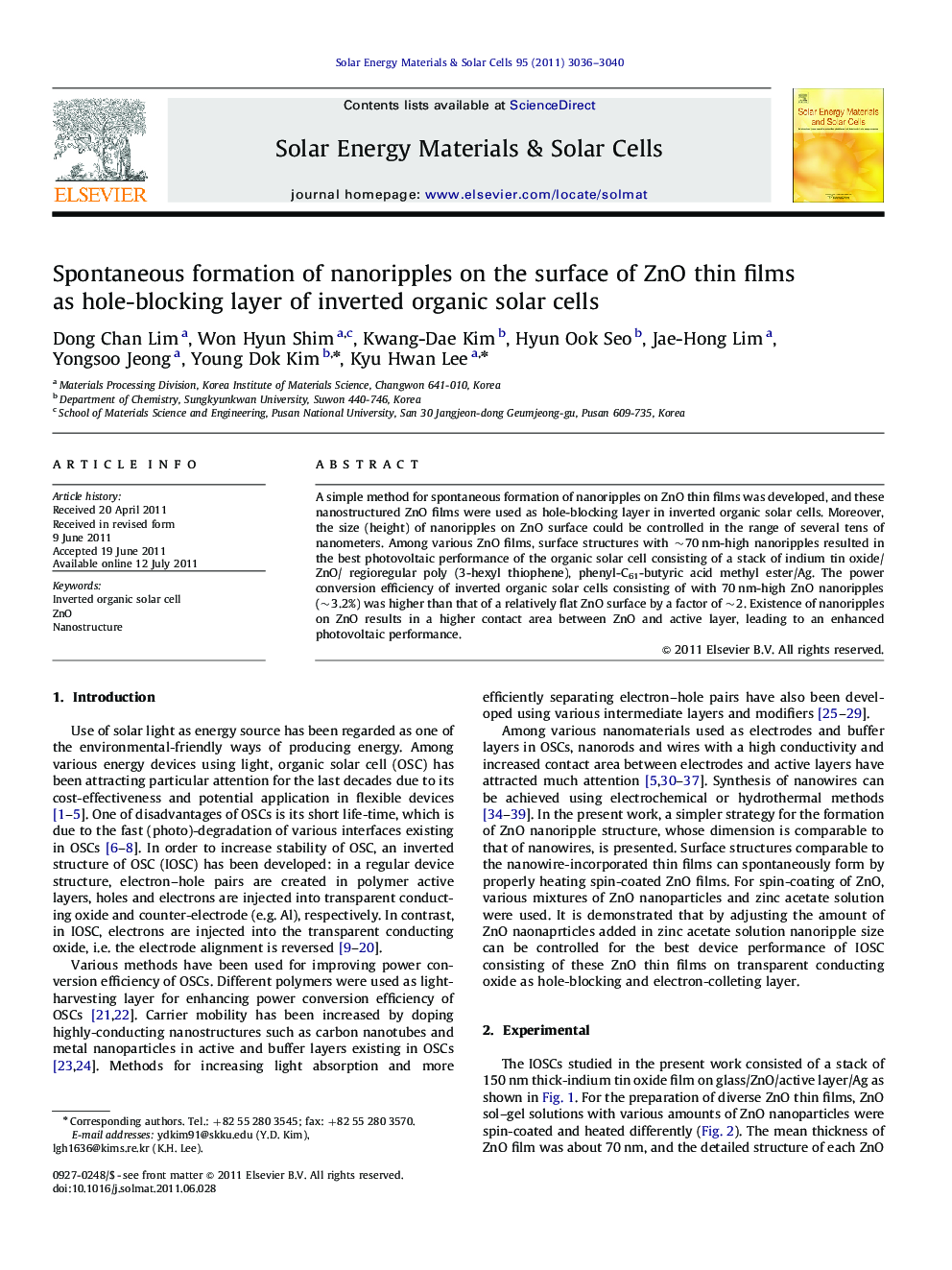| Article ID | Journal | Published Year | Pages | File Type |
|---|---|---|---|---|
| 79355 | Solar Energy Materials and Solar Cells | 2011 | 5 Pages |
A simple method for spontaneous formation of nanoripples on ZnO thin films was developed, and these nanostructured ZnO films were used as hole-blocking layer in inverted organic solar cells. Moreover, the size (height) of nanoripples on ZnO surface could be controlled in the range of several tens of nanometers. Among various ZnO films, surface structures with ∼70 nm-high nanoripples resulted in the best photovoltaic performance of the organic solar cell consisting of a stack of indium tin oxide/ZnO/ regioregular poly (3-hexyl thiophene), phenyl-C61-butyric acid methyl ester/Ag. The power conversion efficiency of inverted organic solar cells consisting of with 70 nm-high ZnO nanoripples (∼3.2%) was higher than that of a relatively flat ZnO surface by a factor of ∼2. Existence of nanoripples on ZnO results in a higher contact area between ZnO and active layer, leading to an enhanced photovoltaic performance.
Graphical AbstractFigure optionsDownload full-size imageDownload as PowerPoint slideHighlights► Nanoripples with variable sizes were created on ZnO thin films. ► ZnO was used as hole-blocking layer of inverted organic solar cells. ► Existence of nanoripples on ZnO enhanced photovoltaic performances.
